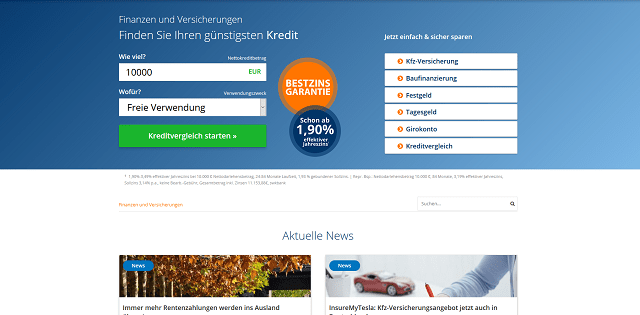Smart Borrowing in 2025: How People Are Using Personal Loans to Take Back Control of Their Finances
Personal loans have evolved into a strategic financial tool that millions of people are using to consolidate debt, fund major purchases, and improve their overall financial health. With competitive interest rates and flexible terms, these unsecured loans offer a practical alternative to credit cards and other high-cost borrowing options, helping borrowers create structured repayment plans while potentially saving money on interest charges.

Smart Borrowing in 2025: How People Are Using Personal Loans to Take Back Control of Their Finances
In today’s financial landscape, personal loans have emerged as a versatile solution for managing various monetary challenges. Unlike traditional credit products, personal loans provide borrowers with a fixed amount of money, predictable monthly payments, and clear repayment timelines that make budgeting easier and more effective.
Why Personal Loans Are Making a Comeback
The resurgence of personal loans stems from their practical advantages over other borrowing methods. Credit card debt often carries variable interest rates that can exceed 20%, while personal loans typically offer fixed rates between 6% and 36%, depending on creditworthiness. This stability allows borrowers to plan their finances more effectively, knowing exactly how much they’ll pay each month and when the debt will be fully repaid.
Many financial institutions have streamlined their application processes, with some lenders providing approval decisions within minutes and funding within 24 hours. This accessibility has made personal loans an attractive option for people facing unexpected expenses or seeking to optimize their debt structure.
How a Personal Loan Can Work for You
Personal loans serve multiple purposes, from debt consolidation to home improvements and major purchases. Debt consolidation remains the most popular use, allowing borrowers to combine multiple high-interest debts into a single payment with potentially lower interest rates. This strategy can reduce monthly payments and total interest paid over time.
Other common applications include funding home renovations, covering medical expenses, or financing significant life events. The fixed-rate structure provides predictability that variable-rate credit cards cannot match, making it easier to incorporate loan payments into monthly budgets.
What to Know Before Applying
Successful personal loan applications require careful preparation and understanding of key factors that lenders evaluate. Credit scores play a crucial role in determining approval and interest rates, with scores above 670 typically qualifying for more favorable terms. Income stability and debt-to-income ratios also significantly impact loan decisions.
Borrowers should gather necessary documentation before applying, including recent pay stubs, tax returns, and bank statements. Understanding the difference between secured and unsecured personal loans is essential, as most personal loans are unsecured and don’t require collateral but may carry higher interest rates as a result.
Real Stories Real Results
Consumer experiences with personal loans demonstrate their effectiveness in various financial situations. Many borrowers report successfully consolidating credit card debt, reducing their monthly payments by 30-50% while shortening repayment timelines. Others have used personal loans to fund home improvements that increased property values, creating positive returns on their borrowing.
Small business owners frequently utilize personal loans for equipment purchases or operational expenses when business loans aren’t accessible. The quick approval process and flexible use of funds make personal loans particularly valuable for time-sensitive financial needs.
| Lender | Loan Amount Range | Interest Rate Range | Repayment Terms |
|---|---|---|---|
| Marcus by Goldman Sachs | $3,500 - $40,000 | 6.99% - 19.99% | 36 - 72 months |
| SoFi | $5,000 - $100,000 | 8.99% - 25.81% | 24 - 84 months |
| LightStream | $5,000 - $100,000 | 7.49% - 25.49% | 24 - 144 months |
| Discover | $2,500 - $35,000 | 6.99% - 24.99% | 36 - 84 months |
| Upstart | $1,000 - $50,000 | 8.27% - 35.99% | 36 - 60 months |
Prices, rates, or cost estimates mentioned in this article are based on the latest available information but may change over time. Independent research is advised before making financial decisions.
How to Find the Best Personal Loan Rates
Securing favorable personal loan rates requires strategic shopping and comparison. Multiple lenders offer different terms, and rates can vary significantly based on individual financial profiles. Online comparison tools allow borrowers to evaluate multiple offers simultaneously without impacting credit scores through soft inquiries.
Pre-qualification processes help borrowers understand potential rates and terms before formal applications. Credit unions often provide competitive rates for members, while online lenders may offer faster processing and more flexible qualification criteria. Traditional banks typically require established relationships but may provide comprehensive financial services alongside loans.
Timing applications strategically can also impact rates, as some lenders offer promotional rates during specific periods. Borrowers with excellent credit should leverage their scores to negotiate better terms, while those with fair credit might benefit from co-signers or secured loan options.
Personal loans continue to evolve as financial institutions adapt to changing consumer needs and technological advances. Their combination of predictable payments, competitive rates, and flexible applications makes them valuable tools for achieving financial goals and managing debt effectively. Understanding the application process, comparing multiple lenders, and choosing appropriate loan terms can help borrowers maximize the benefits of personal loans while minimizing costs.




